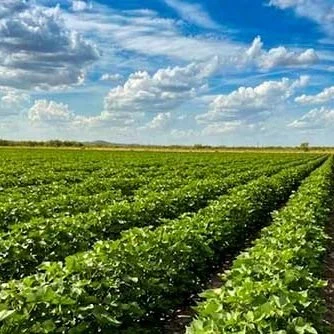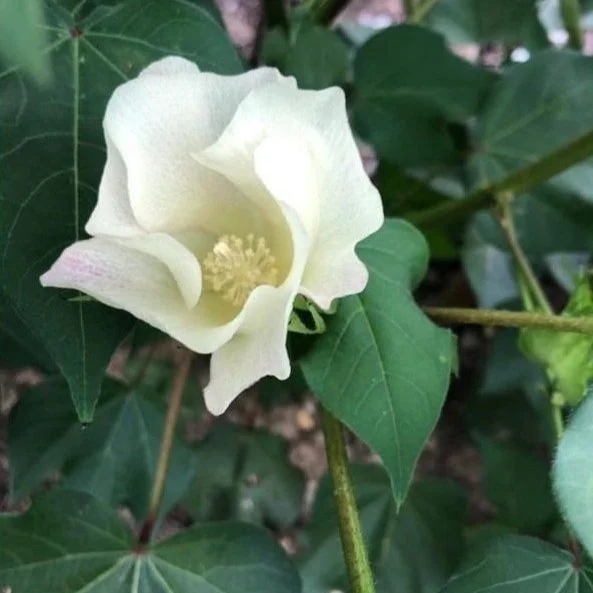It’s been hot and dry for the most part across most of the southern cotton belt.
Read MoreThe NCC, as well as many national/regional cotton organizations, joined 400 other agriculture groups on a letter to the House and Senate budget committees’ leadership requesting sufficient budgetary resources to write a new bipartisan, multi-year, comprehensive and meaningful farm bill.
Read MoreDespite myriad forces facing rice farmers in 2023, the U.S. Department of Agriculture’s Natural Agricultural Statistical Service (NASS) now projects that about 1.311 million acres of the crop have been planted in Arkansas. That’s nearly 200,000 more acres than were planted in 2022, according to the latest NASS report released June 30.
Nationally, about 2.687 million acres have been planted, a nearly 400,000-acre uptick since the last growing season. California ranks second in rice production with 478,000 acres, while Louisiana ranks third with about 460,000 acres.
Read MoreDuring the heat of the production season, early risers and late nighters aptly describes the nature of a crop consultant. Their day typically begins before sunup as they head out to the field to start work at first light. A cell phone, laptop, notebooks, sweep nets and drop cloths adorn their rolling office. After arriving home that night, they spend a lot of time reviewing notes, sending reports to their farmers and preparing to go again in the morning.
Read MoreFreezing temperatures didn't reduce insect pressure in Mississippi and Louisiana row crops. Soybean farmers can expect waves of redbanded stinkbugs.
Read MoreLast year brought a glimmer of hope to cotton farmers as both prices and acreage soared across the mid-South. But that optimism has faded for Louisiana cotton growers as prices have dropped and acreage is being reduced. LSU AgCenter reporter Craig Gautreaux has this report.
Read MoreThis report contains the results from the 2022 December Agricultural and Row Crops County Agricultural Production surveys
Read MoreFiguring out how the Endangered Species Act affects the agricultural industry can be both complex and frustrating. The ESA of 1973 was enacted by Congress under President Nixon and has since drawn much attention to species across the United States that had/have the potential to be threatened or completely wiped from the map.
Read MoreAfter crop emergence, producers should concentrate on managing the cotton plant from the first- through fifth-leaf stage. Reaching the fifth true leaf stage with minimal damage from thrips is a key factor in producing good cotton yields.
Read MoreThe U.S. Department of Agriculture (USDA) seeks nominations of domestic cotton producers from Arkansas, California, Louisiana, Mississippi, North Carolina, Texas, and importers of cotton and cotton-containing products for positions on The Cotton Board. The producers and importers will fill positions for 13 members and 13 alternates. USDA will appoint members and alternates to serve three-year terms beginning Jan. 1, 2024, to Dec. 31, 2026.
Read MoreU.S. Cotton Trust Protocol enrollment for the 2023 crop year opened this week with an updated deadline of September 1.
“With the Trust Protocol all of our work begins with growers and as we look to continuously improve the program and provide further value, we’re pleased to share the updated grower enrollment timing will better align with peak cotton marketing dates,” said Gary Adams, U.S. Cotton Trust Protocol president, in a recent release.
Read MoreThe U.S. Cotton Trust Protocol announced today that enrollment for the 2023 crop year is open now through September 1, providing growers the opportunity to complete data entry prior to harvest. The updated timing also better aligns with peak cotton marketing dates and allows a member’s cotton to be verified and visible as Protocol Cotton bales right after ginning.
Read MoreJust how is cotton raised in the United States? And what are farmers doing to be more sustainable with this important fiber and oilseed crop? Good questions both, and the industry is stepping up to answer that for buyers with information direct from growers in the U.S. Cotton Trust Program.
Read MoreThe U.S. Department of Agriculture’s (USDA) Commodity Credit Corporation today announced the 2023 crop loan rate differentials for upland and extra-long staple cotton which are applied to the crop loan rate to determine the per bale actual loan rate.
Read MoreFrom Texas to Georgia, root-knot and reniform nematodes can be blamed for reducing yields in cotton and in some regions, peanuts and soybeans, as well.
Read More














